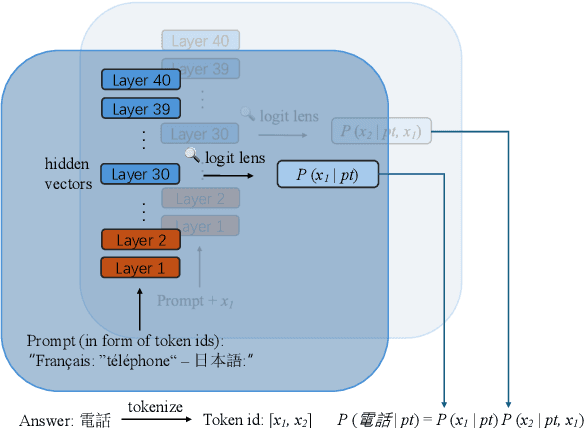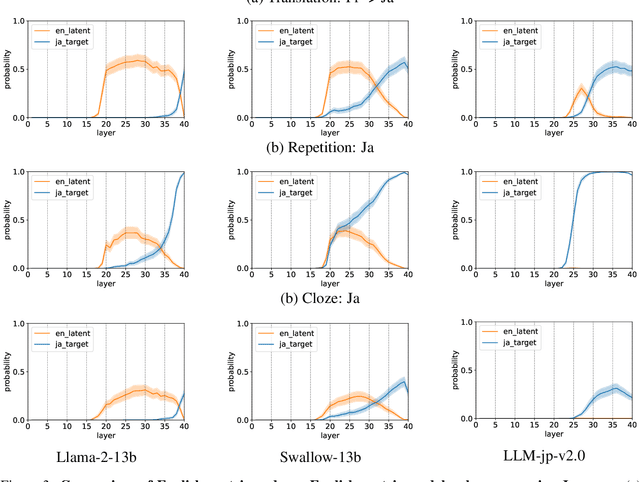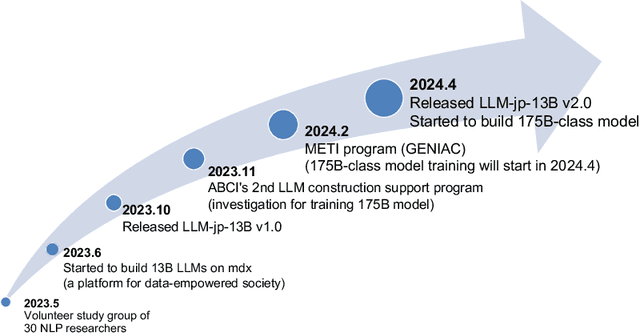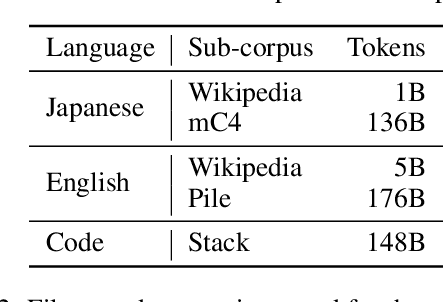Fei Cheng
ArchCAD-400K: An Open Large-Scale Architectural CAD Dataset and New Baseline for Panoptic Symbol Spotting
Apr 02, 2025Abstract:Recognizing symbols in architectural CAD drawings is critical for various advanced engineering applications. In this paper, we propose a novel CAD data annotation engine that leverages intrinsic attributes from systematically archived CAD drawings to automatically generate high-quality annotations, thus significantly reducing manual labeling efforts. Utilizing this engine, we construct ArchCAD-400K, a large-scale CAD dataset consisting of 413,062 chunks from 5538 highly standardized drawings, making it over 26 times larger than the largest existing CAD dataset. ArchCAD-400K boasts an extended drawing diversity and broader categories, offering line-grained annotations. Furthermore, we present a new baseline model for panoptic symbol spotting, termed Dual-Pathway Symbol Spotter (DPSS). It incorporates an adaptive fusion module to enhance primitive features with complementary image features, achieving state-of-the-art performance and enhanced robustness. Extensive experiments validate the effectiveness of DPSS, demonstrating the value of ArchCAD-400K and its potential to drive innovation in architectural design and construction.
Causal Tree Extraction from Medical Case Reports: A Novel Task for Experts-like Text Comprehension
Mar 03, 2025Abstract:Extracting causal relationships from a medical case report is essential for comprehending the case, particularly its diagnostic process. Since the diagnostic process is regarded as a bottom-up inference, causal relationships in cases naturally form a multi-layered tree structure. The existing tasks, such as medical relation extraction, are insufficient for capturing the causal relationships of an entire case, as they treat all relations equally without considering the hierarchical structure inherent in the diagnostic process. Thus, we propose a novel task, Causal Tree Extraction (CTE), which receives a case report and generates a causal tree with the primary disease as the root, providing an intuitive understanding of a case's diagnostic process. Subsequently, we construct a Japanese case report CTE dataset, J-Casemap, propose a generation-based CTE method that outperforms the baseline by 20.2 points in the human evaluation, and introduce evaluation metrics that reflect clinician preferences. Further experiments also show that J-Casemap enhances the performance of solving other medical tasks, such as question answering.
Assessing Large Language Models in Agentic Multilingual National Bias
Feb 25, 2025Abstract:Large Language Models have garnered significant attention for their capabilities in multilingual natural language processing, while studies on risks associated with cross biases are limited to immediate context preferences. Cross-language disparities in reasoning-based recommendations remain largely unexplored, with a lack of even descriptive analysis. This study is the first to address this gap. We test LLM's applicability and capability in providing personalized advice across three key scenarios: university applications, travel, and relocation. We investigate multilingual bias in state-of-the-art LLMs by analyzing their responses to decision-making tasks across multiple languages. We quantify bias in model-generated scores and assess the impact of demographic factors and reasoning strategies (e.g., Chain-of-Thought prompting) on bias patterns. Our findings reveal that local language bias is prevalent across different tasks, with GPT-4 and Sonnet reducing bias for English-speaking countries compared to GPT-3.5 but failing to achieve robust multilingual alignment, highlighting broader implications for multilingual AI agents and applications such as education.
Cross-lingual Embedding Clustering for Hierarchical Softmax in Low-Resource Multilingual Speech Recognition
Jan 29, 2025



Abstract:We present a novel approach centered on the decoding stage of Automatic Speech Recognition (ASR) that enhances multilingual performance, especially for low-resource languages. It utilizes a cross-lingual embedding clustering method to construct a hierarchical Softmax (H-Softmax) decoder, which enables similar tokens across different languages to share similar decoder representations. It addresses the limitations of the previous Huffman-based H-Softmax method, which relied on shallow features in token similarity assessments. Through experiments on a downsampled dataset of 15 languages, we demonstrate the effectiveness of our approach in improving low-resource multilingual ASR accuracy.
SAMCL: Empowering SAM to Continually Learn from Dynamic Domains
Dec 06, 2024Abstract:Segment Anything Model (SAM) struggles with segmenting objects in the open world, especially across diverse and dynamic domains. Continual segmentation (CS) is a potential technique to solve this issue, but a significant obstacle is the intractable balance between previous domains (stability) and new domains (plasticity) during CS. Furthermore, how to utilize two kinds of features of SAM, images and prompts, in an efficient and effective CS manner remains a significant hurdle. In this work, we propose a novel CS method, termed SAMCL, to address these challenges. It is the first study to empower SAM with the CS ability across dynamic domains. SAMCL decouples stability and plasticity during CS by two components: $\textit{AugModule}$ and $\textit{Module Selector}$. Specifically, SAMCL leverages individual $\textit{AugModule}$ to effectively and efficiently learn new relationships between images and prompts in each domain. $\textit{Module Selector}$ selects the appropriate module during testing, based on the inherent ability of SAM to distinguish between different domains. These two components enable SAMCL to realize a task-agnostic method without any interference across different domains. Experimental results demonstrate that SAMCL outperforms state-of-the-art methods, achieving an exceptionally low average forgetting of just $0.5$%, along with at least a $2.5$% improvement in transferring to unseen domains. Moreover, the tunable parameter consumption in AugModule is about $0.236$MB, marking at least a $23.3$% reduction compared to other fine-tuning methods.
Investigating Cost-Efficiency of LLM-Generated Training Data for Conversational Semantic Frame Analysis
Oct 09, 2024



Abstract:Recent studies have demonstrated that few-shot learning allows LLMs to generate training data for supervised models at a low cost. However, the quality of LLM-generated data may not entirely match that of human-labeled data. This raises a crucial question: how should one balance the trade-off between the higher quality but more expensive human data and the lower quality yet substantially cheaper LLM-generated data? In this paper, we synthesized training data for conversational semantic frame analysis using GPT-4 and examined how to allocate budgets optimally to achieve the best performance. Our experiments, conducted across various budget levels, reveal that optimal cost-efficiency is achieved by combining both human and LLM-generated data across a wide range of budget levels. Notably, as the budget decreases, a higher proportion of LLM-generated data becomes more preferable.
Beyond English-Centric LLMs: What Language Do Multilingual Language Models Think in?
Aug 20, 2024



Abstract:In this study, we investigate whether non-English-centric LLMs, despite their strong performance, `think' in their respective dominant language: more precisely, `think' refers to how the representations of intermediate layers, when un-embedded into the vocabulary space, exhibit higher probabilities for certain dominant languages during generation. We term such languages as internal $\textbf{latent languages}$. We examine the latent language of three typical categories of models for Japanese processing: Llama2, an English-centric model; Swallow, an English-centric model with continued pre-training in Japanese; and LLM-jp, a model pre-trained on balanced English and Japanese corpora. Our empirical findings reveal that, unlike Llama2 which relies exclusively on English as the internal latent language, Japanese-specific Swallow and LLM-jp employ both Japanese and English, exhibiting dual internal latent languages. For any given target language, the model preferentially activates the latent language most closely related to it. In addition, we explore how intermediate layers respond to questions involving cultural conflicts between latent internal and target output languages. We further explore how the language identity shifts across layers while keeping consistent semantic meaning reflected in the intermediate layer representations. This study deepens the understanding of non-English-centric large language models, highlighting the intricate dynamics of language representation within their intermediate layers.
Efficient Continual Learning with Low Memory Footprint For Edge Device
Jul 15, 2024



Abstract:Continual learning(CL) is a useful technique to acquire dynamic knowledge continually. Although powerful cloud platforms can fully exert the ability of CL,e.g., customized recommendation systems, similar personalized requirements for edge devices are almost disregarded. This phenomenon stems from the huge resource overhead involved in training neural networks and overcoming the forgetting problem of CL. This paper focuses on these scenarios and proposes a compact algorithm called LightCL. Different from other CL methods bringing huge resource consumption to acquire generalizability among all tasks for delaying forgetting, LightCL compress the resource consumption of already generalized components in neural networks and uses a few extra resources to improve memory in other parts. We first propose two new metrics of learning plasticity and memory stability to seek generalizability during CL. Based on the discovery that lower and middle layers have more generalizability and deeper layers are opposite, we $\textit{Maintain Generalizability}$ by freezing the lower and middle layers. Then, we $\textit{Memorize Feature Patterns}$ to stabilize the feature extracting patterns of previous tasks to improve generalizability in deeper layers. In the experimental comparison, LightCL outperforms other SOTA methods in delaying forgetting and reduces at most $\textbf{6.16$\times$}$ memory footprint, proving the excellent performance of LightCL in efficiency. We also evaluate the efficiency of our method on an edge device, the Jetson Nano, which further proves our method's practical effectiveness.
LLM-jp: A Cross-organizational Project for the Research and Development of Fully Open Japanese LLMs
Jul 04, 2024



Abstract:This paper introduces LLM-jp, a cross-organizational project for the research and development of Japanese large language models (LLMs). LLM-jp aims to develop open-source and strong Japanese LLMs, and as of this writing, more than 1,500 participants from academia and industry are working together for this purpose. This paper presents the background of the establishment of LLM-jp, summaries of its activities, and technical reports on the LLMs developed by LLM-jp. For the latest activities, visit https://llm-jp.nii.ac.jp/en/.
Enhancing In-Context Learning with Semantic Representations for Relation Extraction
Jun 14, 2024



Abstract:In this work, we employ two AMR-enhanced semantic representations for ICL on RE: one that explores the AMR structure generated for a sentence at the subgraph level (shortest AMR path), and another that explores the full AMR structure generated for a sentence. In both cases, we demonstrate that all settings benefit from the fine-grained AMR's semantic structure. We evaluate our model on four RE datasets. Our results show that our model can outperform the GPT-based baselines, and achieve SOTA performance on two of the datasets, and competitive performance on the other two.
 Add to Chrome
Add to Chrome Add to Firefox
Add to Firefox Add to Edge
Add to Edge